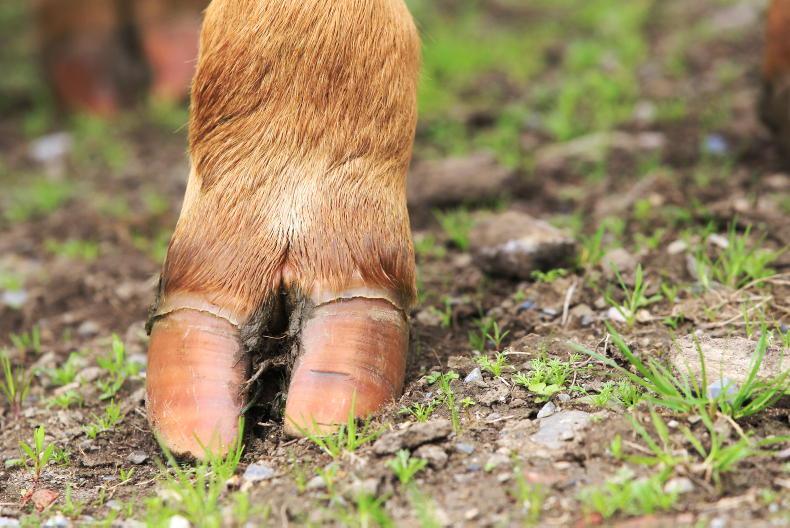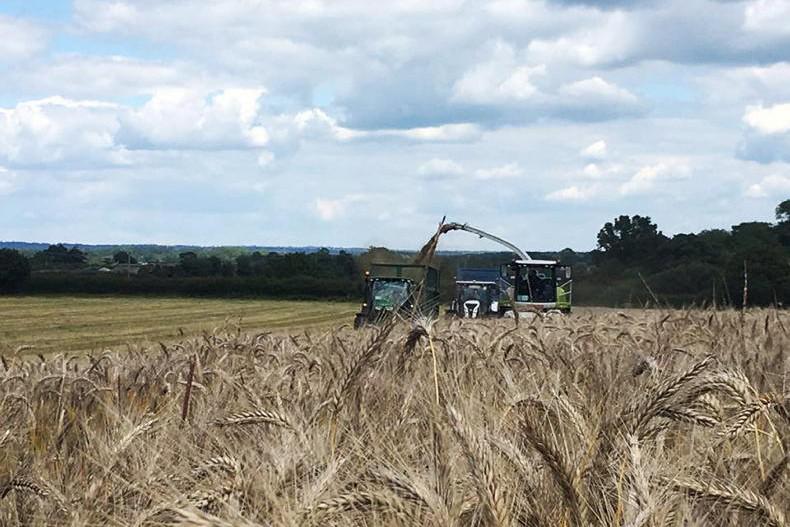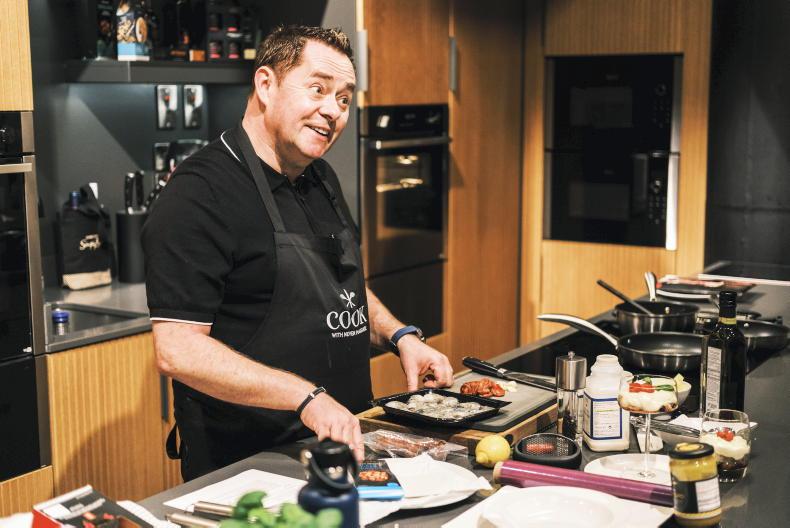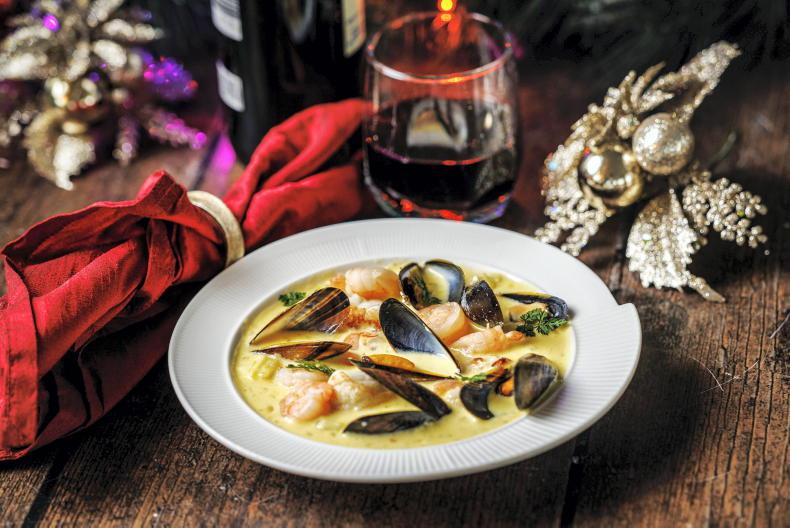Seventy years ago, in 1953, Queen Elizabeth II was officially crowned during a lavish coronation ceremony. I obviously was not alive at this time – it took place a year before my mother was born – but by all accounts, the British Commonwealth (which includes my native Canada) were excited to celebrate the first female monarch since Queen Victoria in the 1800s.
A remnant of this day is something which still pops up in cafes, at picnics and during church or fundraising luncheons: coronation chicken. Who doesn’t love a bit of coronation chicken? I certainly can’t say no to the gently spiced, creamy chicken salad – especially on a bit of toasted, buttery brioche bread.
Some say the recipe, which was developed by food writer Constance Spry and Rosemary Hume – founder of Le Cordon Bleu cookery school – was a nod to jubilee chicken; a dish made in honour of King George V in 1935. That chicken dish was a simple mixture of mayonnaise and curry.
Coronation chicken went a few steps further: it combined diced or pureed dried apricots (not sultanas as we have seen in many renditions since), lightly whipped (unsweetened) cream, mayonnaise, poached chicken and it was sometimes garnished with toasted, flaked almonds.
A luncheon hit
Coronation chicken went down well when first served at the late queen’s coronation luncheon and I can understand why. It’s a people pleaser. The luncheon was hosting dignitaries from around the world, so while keeping the overall flavour of the dish mild, the chefs were still able to incorporate some global flavour (perhaps a bit of a nod to some of their Commonwealth countries at the time).
At that time, Queen Elizabeth was considered by many to be a refreshingly modern monarch who would help bring post-war Britain into a bright future. In a way, coronation chicken reflected that vision.
Now, we are on the brink of another coronation day – this time for Elizabeth’s eldest son, King Charles III. A new dish has been created in honour of this and people are being encouraged to bake his coronation quiche for the celebratory luncheons taking place.
The ingredients
So what’s in the quiche? Well, quite controversially (if you read the British newspapers), eggs are obviously the main ingredient. Some feel this was a bad choice, considering the current egg shortage taking place within Britain (in light of the avian flu outbreak). The remaining ingredients – broad beans, tarragon, cheddar cheese, spinach and cream – are benignly acceptable. I say benignly because, well … this quiche seems just a little bit boring.
I am aware that King Charles is an avid gardener and believes in the grow-your-own ethos. This is probably why the quiche is vegetarian and features accessible vegetables (though try finding broad beans in rural Tipperary. I had to travel to Dublin for that particular ingredient).
When you think about Queen Elizabeth’s coronation chicken and the fact that curry in post-war Britain was quite exotic (powdered curry was used because fresh spices were nearly impossible to come by at the time) and was prepared by two British culinary icons – a simple quiche seems a little dull by comparison.
But hey, what do I know? We had to make the quiche ourselves before being in any way “judgey”.
For the filling:
125ml milk
175ml double cream
2 medium eggs
1 tablespoon chopped fresh tarragon,
Salt and pepper
100g grated cheddar cheese,
180g cooked spinach, chopped
60g cooked broad beans or soya beans
For the pastry:
125g plain flour
Pinch of salt
25g cold butter, diced
25g lard
2 tablespoons milk
Or 1 x 250g block of ready-made shortcrust pastry
1 Make the pastry: sieve the flour and salt into a bowl and add the fats and rub the mixture together using your fingertips until you get a sandy, breadcrumb-like texture.
2 Add the milk, a little at a time, and bring the ingredients together into a dough.
3 Cover and allow to rest in the fridge for 30-45 minutes.
4 Lightly flour the work surface and roll out the pastry to a circle a little larger than the top of the tin and approximately 5mm thick.
5 Line the tin with the pastry, taking care not to have any holes or the mixture could leak. Cover and rest for a further 30 minutes in the fridge.
6 Preheat the oven to 190°C.
7 Line the pastry case with greaseproof paper, add baking beans and bake blind for 15 minutes, before removing the greaseproof paper and baking beans.
8 Reduce the oven temperature to 160°C.
9 Beat together the milk, cream, eggs, herbs and seasoning.
10 Scatter half of the grated cheese in the blind-baked base, top with the chopped spinach, beans and herbs, then pour over the liquid mixture.
11 If required, gently give the mixture a delicate stir to ensure the filling is evenly dispersed but be careful not to damage the pastry case.
12 Sprinkle over the remaining cheese. Place into the oven and bake for 20 to 25 minutes until set and lightly golden.
Read more
Former Midleton master distiller is blending success in the United States
Truffles could bring opportunities for farmers planning on planting trees
Seventy years ago, in 1953, Queen Elizabeth II was officially crowned during a lavish coronation ceremony. I obviously was not alive at this time – it took place a year before my mother was born – but by all accounts, the British Commonwealth (which includes my native Canada) were excited to celebrate the first female monarch since Queen Victoria in the 1800s.
A remnant of this day is something which still pops up in cafes, at picnics and during church or fundraising luncheons: coronation chicken. Who doesn’t love a bit of coronation chicken? I certainly can’t say no to the gently spiced, creamy chicken salad – especially on a bit of toasted, buttery brioche bread.
Some say the recipe, which was developed by food writer Constance Spry and Rosemary Hume – founder of Le Cordon Bleu cookery school – was a nod to jubilee chicken; a dish made in honour of King George V in 1935. That chicken dish was a simple mixture of mayonnaise and curry.
Coronation chicken went a few steps further: it combined diced or pureed dried apricots (not sultanas as we have seen in many renditions since), lightly whipped (unsweetened) cream, mayonnaise, poached chicken and it was sometimes garnished with toasted, flaked almonds.
A luncheon hit
Coronation chicken went down well when first served at the late queen’s coronation luncheon and I can understand why. It’s a people pleaser. The luncheon was hosting dignitaries from around the world, so while keeping the overall flavour of the dish mild, the chefs were still able to incorporate some global flavour (perhaps a bit of a nod to some of their Commonwealth countries at the time).
At that time, Queen Elizabeth was considered by many to be a refreshingly modern monarch who would help bring post-war Britain into a bright future. In a way, coronation chicken reflected that vision.
Now, we are on the brink of another coronation day – this time for Elizabeth’s eldest son, King Charles III. A new dish has been created in honour of this and people are being encouraged to bake his coronation quiche for the celebratory luncheons taking place.
The ingredients
So what’s in the quiche? Well, quite controversially (if you read the British newspapers), eggs are obviously the main ingredient. Some feel this was a bad choice, considering the current egg shortage taking place within Britain (in light of the avian flu outbreak). The remaining ingredients – broad beans, tarragon, cheddar cheese, spinach and cream – are benignly acceptable. I say benignly because, well … this quiche seems just a little bit boring.
I am aware that King Charles is an avid gardener and believes in the grow-your-own ethos. This is probably why the quiche is vegetarian and features accessible vegetables (though try finding broad beans in rural Tipperary. I had to travel to Dublin for that particular ingredient).
When you think about Queen Elizabeth’s coronation chicken and the fact that curry in post-war Britain was quite exotic (powdered curry was used because fresh spices were nearly impossible to come by at the time) and was prepared by two British culinary icons – a simple quiche seems a little dull by comparison.
But hey, what do I know? We had to make the quiche ourselves before being in any way “judgey”.
For the filling:
125ml milk
175ml double cream
2 medium eggs
1 tablespoon chopped fresh tarragon,
Salt and pepper
100g grated cheddar cheese,
180g cooked spinach, chopped
60g cooked broad beans or soya beans
For the pastry:
125g plain flour
Pinch of salt
25g cold butter, diced
25g lard
2 tablespoons milk
Or 1 x 250g block of ready-made shortcrust pastry
1 Make the pastry: sieve the flour and salt into a bowl and add the fats and rub the mixture together using your fingertips until you get a sandy, breadcrumb-like texture.
2 Add the milk, a little at a time, and bring the ingredients together into a dough.
3 Cover and allow to rest in the fridge for 30-45 minutes.
4 Lightly flour the work surface and roll out the pastry to a circle a little larger than the top of the tin and approximately 5mm thick.
5 Line the tin with the pastry, taking care not to have any holes or the mixture could leak. Cover and rest for a further 30 minutes in the fridge.
6 Preheat the oven to 190°C.
7 Line the pastry case with greaseproof paper, add baking beans and bake blind for 15 minutes, before removing the greaseproof paper and baking beans.
8 Reduce the oven temperature to 160°C.
9 Beat together the milk, cream, eggs, herbs and seasoning.
10 Scatter half of the grated cheese in the blind-baked base, top with the chopped spinach, beans and herbs, then pour over the liquid mixture.
11 If required, gently give the mixture a delicate stir to ensure the filling is evenly dispersed but be careful not to damage the pastry case.
12 Sprinkle over the remaining cheese. Place into the oven and bake for 20 to 25 minutes until set and lightly golden.
Read more
Former Midleton master distiller is blending success in the United States
Truffles could bring opportunities for farmers planning on planting trees









SHARING OPTIONS